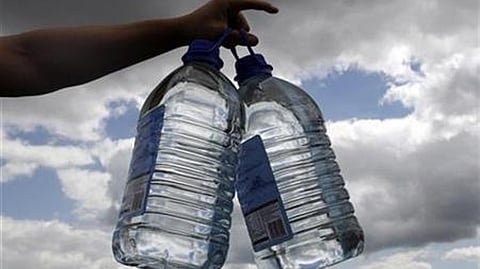

CHENNAI: Scientists have demonstrated for the first time that viruses may survive and remain contagious by attaching themselves to plastics in freshwater. Questions about how the new study might affect human health are raised.
Researchers have found that the rotavirus, which causes diarrhoea, may survive in lake water for up to three days by clinging to the surfaces of microscopic plastic debris, or microplastics. The size of these microplastics makes it possible for swimmers to consume them.
The latest results, which were published in the journal ScienceDirect, show that infectious virus particles were found on microplastics that had been invaded by biofilms, and that their contact with the biofilms improved virus survival when compared to the water phase.
This is the first study of this kind to examine the problem of using water taken from the natural environment, and it is being led by researchers from the University of Stirling.
Even if a wastewater treatment plant makes every effort to clean sewage waste, the water that is released still contains microplastics, which are subsequently carried downstream by rivers, into estuaries, and eventually land on beaches. The project's lead researcher, Professor Richard Quilliam, said in a statement: "We weren't sure how well viruses could live by "hitch-hiking" on plastic in the environment, but they do survive and they do remain infectious.
The two virus kinds that were investigated by researchers were those that had an envelope, or "lipid coat," such as the flu virus (they tested bacteriophage Phi6), and those without enteric viruses, such as rotavirus and norovirus (they tested rotavirus strain SA11). They found that in those with an envelope, the envelope quickly dissolved, and the virus was deactivated, whereas those without an envelope successfully bound to the microplastics and survived.
Microplastics are produced when ocean plastic garbage degrades due to solar radiation and wave movement. Ocean currents can carry these microscopic particles hundreds or thousands of kilometers from their source, making it challenging to locate and remove them. Microplastics, like all plastics, are not biodegradable and can take hundreds of years to break down. These microscopic plastic particles were unexpectedly discovered in human blood, raising concerns about health and revealing the full scope of plastics' harmful influence on the planet.
Not only have they invaded human territory, but also the Mariana Trench, the peak of Mount Everest, and even the depths of space. The majority of this microplastic, according to researchers, comes from packaging; yet, while its effects on health are still being thoroughly researched, its existence in these locations is still surprising.
Visit news.dtnext.in to explore our interactive epaper!
Download the DT Next app for more exciting features!
Click here for iOS
Click here for Android